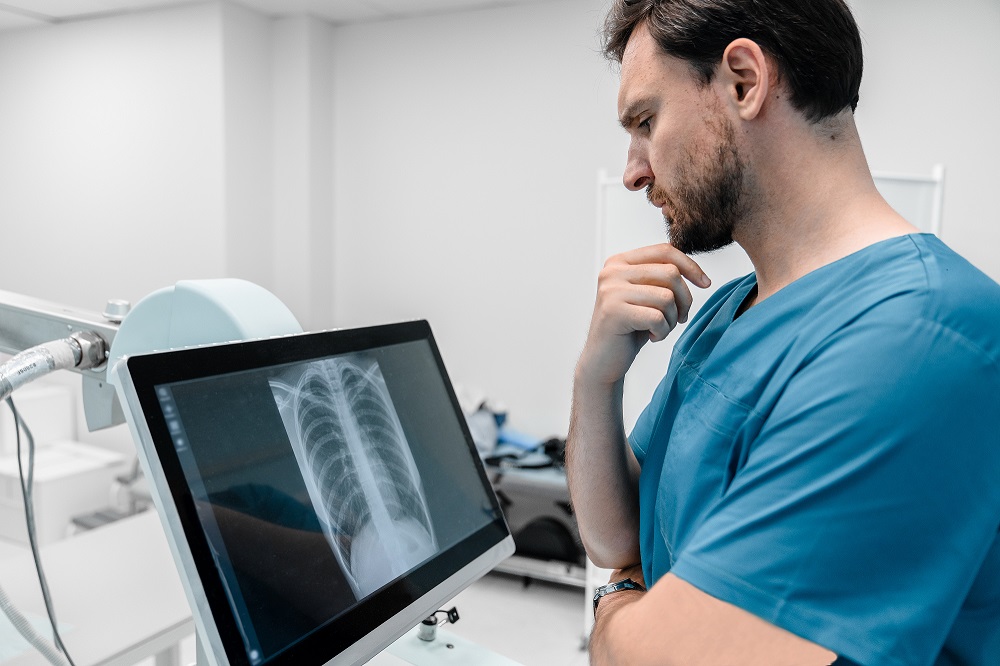Purpose of the Skull X-Ray (AP and Lateral Views)
1] Fractures: One of the most common reasons for skull X-rays is to assess head trauma or suspected skull fractures. The skull protects the brain, and fractures to the skull can lead to serious neurological complications. X-rays can identify fractures in the cranial bones, including the frontal bone, parietal bones, temporal bones, and occipital bone.
2] Infections: Infections like osteomyelitis (bone infection) or sinusitis (inflammation of the sinuses) can be detected with an X-ray. These conditions may cause swelling or abnormal bone changes, which can be seen on the imaging.
3] Tumors and Lesions: Abnormal growths such as tumors, cysts, or abscesses within the skull or surrounding structures (such as the sinuses) can be identified through an X-ray. These growths may cause pressure or deformities in the skull, and an X-ray can provide clues to their presence.
4] Congenital Abnormalities: Birth defects that affect the skull or facial bones, such as craniosynostosis (premature closure of sutures), can be detected in an X-ray.
5] Sinus Problems: The X-ray can also show the sinuses, helping to diagnose issues like chronic sinusitis or sinus infections.
6] Pre-surgical Planning: Skull X-rays may be performed prior to surgery to assess the anatomy and ensure proper planning for procedures, such as cranial surgery or reconstructive facial surgery.
For X-Ray Skull AP/Lateral in Pune, visit Diagnopein, the best digital X-ray centre near me. This specialized imaging test provides detailed views of the skull in anterior-posterior (AP) and lateral (side) perspectives, aiding in the diagnosis of fractures, abnormalities, sinus conditions, and other cranial concerns. At Diagnopein, we utilize advanced digital X-ray technology to deliver high-quality images with minimal radiation exposure. Our experienced technicians and radiologists ensure accurate results, fast reporting, and a patient-friendly experience. Trust us for precise and reliable diagnostic imaging tailored to your healthcare needs in Pune.
How the Skull X-Ray AP Lateral Is Performed ?
1] AP View:
A] In the AP view, the patient is typically positioned with the back of the head against the X-ray machine and their face facing forward.
B] The patient will be asked to remain still while the X-ray machine sends a beam through the skull, capturing an image from front to back.
C] The AP view is helpful in detecting fractures, deformities, and abnormalities that are visible from a frontal perspective.
2] Lateral View:
A] In the lateral view, the patient turns their head to the side, with the side of the skull facing the X-ray machine.
B] The patient will also be asked to remain still while the X-ray machine emits a beam through the skull from one side to the other.
C] The lateral view provides additional details about the skull’s structure and is especially useful for detecting fractures, tumors, or deformities that may not be visible in the AP view.









